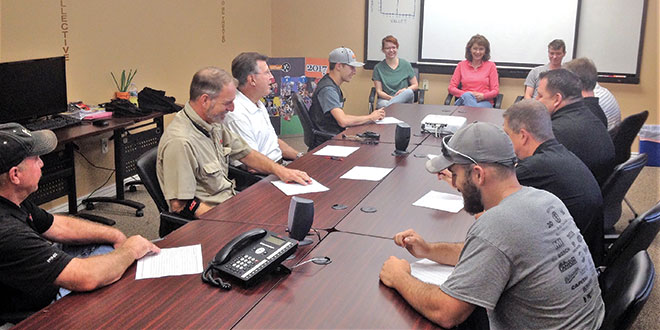As a former general manager of seven home improvement centers, Kim Peffley knows the importance of creating a resourceful team and establishing a culture that supports its success. Now as an NRHA Vision Process consultant, she helps teams understand how their culture dictates their success.
The Vision Process program is an in-store organizational development program that aims to establish core values to bring cohesion, clarity and confidence to home improvement employees at every level.
“I took part in the Vision Process as a store manager, and it brought an incredible amount of structure and organization to our system,” she says.
Vision Process consultants like Peffley guide retail teams through four separate stages of improving overall company culture by establishing core values; aligning company vision and values; standardizing procedures and evaluating the results of the teamwide improvement process.
Peffley says home improvement retailers should know that each Vision Process program is completely customized to a retailer’s individual needs. By adapting to specific culture needs, the Vision Process becomes an integral part of understanding and improving culture.
Wondering if the Vision Process is right for your business? Learn more about the ways it benefits teams and how you can bring it to your operation.
1. Personalized paths improve culture.
The main goal of the program is to improve workplace culture through on-site visits from the Vision Process team. Peffley says visits help everyone understand the specific culture of a retail environment and how it can be improved.
“Being in the store helps us customize our program to a company’s specific needs,” she says. “We get to meet staff and get a true sense of the culture.”
2. The Vision Process keeps teams honest.
The Vision Process team visits retail locations four times a year to ensure the process is running smoothly. Peffley says these visits help business owners and store associates keep sight of long- and short-term goals.
“These visits really encourage follow-through. We also check in on progress with emails and phone calls, but visiting in-store is a crucial part of the process.”
3. Core values guide teams to success.
During on-site visits, the team reviews or establishes core company values. Peffley says the values are used to guide management and associates toward a single goal.
“Retailers can use core values in many different ways. From hiring to motivating staff, these values become the new language of the company. Establishing unique core values is a big part of how we drive the culture.”
4. Best practices improve productivity.
Implementing teamwide best practices is a critical part of the Vision Process. Peffley says protocols for cleaning, training, communication and other operations tasks save time and ensure everyone is on the same page.
“These best practices set an example of how things should be done. If you establish and then follow best practices, your whole team can work as one.”
 Hardware Retailing The Industry's Source for Insights and Information
Hardware Retailing The Industry's Source for Insights and Information








